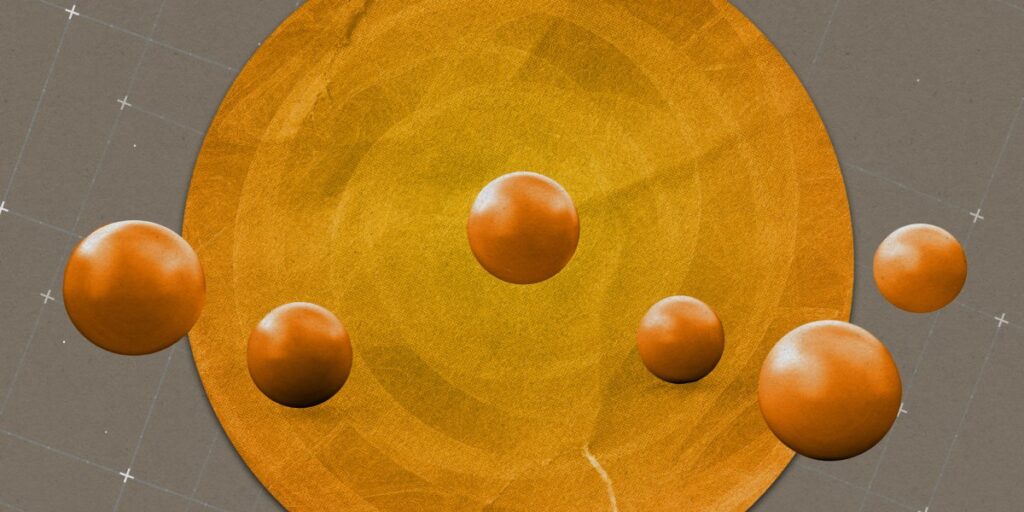The glass cell that serves as the radar’s quantum component is full of cesium atoms kept at room temperature. The researchers use lasers to get each individual cesium atom to swell to nearly the size of a bacterium, about 10,000 times bigger than the usual size. Atoms in this bloated condition are called Rydberg atoms.
When incoming radio waves hit Rydberg atoms, they disturb the distribution of electrons around their nuclei. Researchers can detect the disturbance by shining lasers on the atoms, causing them to emit light; when the atoms are interacting with a radio wave, the color of their emitted light changes. Monitoring the color of this light thus makes it possible to use the atoms as a radio receiver. Rydberg atoms are sensitive to a wide range of radio frequencies without needing to change the physical setup, says Michał Parniak, a physicist at the University of Warsaw in Poland, who was not involved in the work. This means a single compact radar device could potentially work at the multiple frequency bands required for different applications.
Simons’s team tested the radar by placing it in a specially designed room with foam spikes on the floor, ceiling, and walls like stalactites and stalagmites. The spikes absorb, rather than reflect, nearly all the radio waves that hit them. This simulates the effect of a large open space, allowing the group to test the radar’s imaging capability without unwanted reflections off walls.
MATT SIMONS, NIST
The researchers placed a radio wave transmitter in the room, along with their Rydberg atom receiver, which was hooked up to an optical table outside the room. They aimed radio waves at a copper plate about the size of a sheet of paper, some pipes, and a steel rod in the room, each placed up to five meters away. The radar allowed them to locate the objects to within 4.7 centimeters. The team posted a paper on the research to the arXiv preprint server in late June.
The work moves quantum radar closer to a commercial product. “This is really about putting elements together in a nice way,” says Parniak. While other researchers have previously demonstrated how Rydberg atoms can work as radio wave detectors, he says, this group has integrated the receiver with the rest of the device more sleekly than before.
Other researchers have explored the use of Rydberg atoms for other radar applications. For example, Parniak’s team recently developed a Rydberg atom sensor for measuring radio frequencies to troubleshoot chips used in car radar. Researchers are also exploring whether radar using Rydberg-atom receivers could be used for measuring soil moisture.
This device is just one example of a quantum sensor, a type of technology that incorporates quantum components into conventional tools. For example, the US government has developed gyroscopes that use the wave properties of atoms for sensing rotation, which is useful for navigation. Researchers have also created quantum sensors using impurities in diamond to measure magnetic fields in, for example, biomedical applications.
